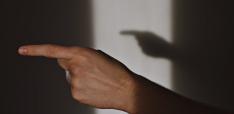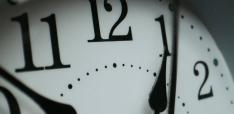Iran goes Power Photoshopping
Normal.dotm
0
0
1
1227
6997
Wirtschaft am Wasserturm
58
13
8592
12.0
0
false
21
18 pt
18 pt
0
0
false
false
false
/* Style Definitions */
table.MsoNormalTable
{mso-style-name:"Normale Tabelle";
mso-tstyle-rowband-size:0;
mso-tstyle-colband-size:0;
mso-style-noshow:yes;
mso-style-parent:"";
mso-padding-alt:0cm 5.4pt 0cm 5.4pt;
mso-para-margin:0cm;
mso-para-margin-bottom:.0001pt;
mso-pagination:widow-orphan;
font-size:12.0pt;
font-family:"Times New Roman";
mso-ascii-font-family:Cambria;
mso-ascii-theme-font:minor-latin;
mso-hansi-font-family:Cambria;
mso-hansi-theme-font:minor-latin;
mso-fareast-language:EN-US;}
“Almaty II” is beckoning: Next week, the UN-backed talks over Iran’s nuclear programme will continue in the Kazakh capital. However, the Iranian leadership’s obsession with retouching images until they fit its likings – from covering ‘provoking’ necklines to making fake fighter planes fly – is revealing. In the end, the question for untangling the nuclear knot will be more about whether this regime accepts the others’ reality rather than vice versa.
If reality is too harsh to bear, you may find yourself tempted to invent a new one so that you can simply cope with it. The rise in ‘photoshopping incidents’ in Iran over the past weeks alone appears to signal how advanced this ‘dissociative disorder’ might already be. Admittedly, no government in the world is free from ‘spinning’ reality to better fit its needs. Yet, the Iranian regime has a history of using picture rendering techniques ever since the country entered the ‘Photoshop hall of fame’ with a controversial missile launch nearly five years ago. (Shortly after many respected newspapers had used the official photograph depicting the launch of four missiles on their front pages, it turned out that in fact only three missiles had taken off – the fourth one had been photoshopped into the picture.)
Now think of the following – seemingly disconnected – instances from the fields of show business, military armament, and scientific progress, respectively, which all took place in the first three months of this year.
For one, there was Iran’s widely publicised attempt to cover Michelle Obama’s neckline when she presented this year’s Academy Award winner (which happened to ‘Argo’, a movie about the lesser known part of the U.S. hostage crisis amid the Islamic Revolution of 1979; while the authorities realised they could not photoshop away the Oscar itself, they nonetheless threatened court action against the film). Fars News, an agency closely linked to the paramilitary Islamic Revolutionary Guards Corps (IRGC), showed a still of the ceremonies, with the First Lady’s low-cut silver gown extended to the upper arms and chest for a more chaste look. (This, by the way, happened before to the international nuclear negotiator and EU foreign affairs chief, Cathy Ashton, after her neckline was considered too ‘plunging’ by Iranian authorities. Making an attempt at ‘wardrobe diplomacy’, she wore a scarf on the next occasion.)
Only days earlier, Iranian authorities had published images of the country’s newly built stealth fighter. Named ‘Qaher 313’ (Persian for ‘dominant’), this supposedly radar-evading plane would be on par with the most advanced fighters in the world, President Ahmadinejad heralded during the unveiling ceremony. When criticised for merely presenting a static plane in a hangar, Iranian officials quickly released another picture showing the plane ‘in action’. However, while the Qaher 313 on this shot looked exactly like the one in the hangar, the background – Mount Damavand, Iran’s highest mountain – was identical to a wallpaper image downloadable from a public website. Rather than demonstrating that the plane could actually fly, the apparent photoshopping proved the opposite.
Add to this the rumours building around the “ape in space” story from late January. Just days before the 34th anniversary of the Islamic Revolution, Iranian news agencies reported that the country had sent a monkey into space. The bold claim was that, despite the ‘crippling’ international sanctions, Tehran was able to develop advanced space technology. However, the pictures released clearly showed two different animals before and after the flight, rising suspicions that the monkey named Pishgam (‘pioneer’ in Persian) had in fact died.
While the explanation for this may indeed be simple – one archive picture being erroneously published by the Iranian students news agency – the confusion created by defiant Persian officials did not increase trust in the flight actually having taken place. First, they spoke of both the rocket and the monkey being named Pishgam. Second, they referred to up to five monkeys being trained for the flight with only one selected in the end, making a mix-up of pictures allegedly likely. Finally, no one on the Iranian side bothered to publish pictures of the ‘real monkey’ after its return to earth, which could have fully explained the incident.
The most revealing incident, however, comes from an unexpected side, i.e. President Ahmadinejad himself. After his ally and personal friend, Hugo Chavez, died of cancer in early March, he quickly flew to Venezuela to publicly express his grief. So far so good, but when he touched the late President’s mother in a gesture of shared mourning, the mullahs back home went wild: Referring to Shiite rules, high-ranking clerics reminded the Iranian president that an unrelated women ought not to be touched unless she was drowning at sea or needed medical treatment.
Interestingly, Ahmadinejad’s aides countered this criticism by claiming that the image of the President and Chavez’ mother was fake. They even provided a photograph that showed Ahmadinejad in the same gesture with a man – an image that turned out to be photoshopped from a real picture depicting, of all people, Mohammed El-Baradei, then head of the International Atomic Energy Agency (IAEA) and the ‘man’, greeting the speaker of the Iranian Parliament, Ali Larijani.
Up to this point, one could simply have assumed that the Iranian leadership supposed it could fool its people into believing that a) the First Lady did wear a more modest dress, b) Iran’s air force could truly compete with its enemies, and c) their country had indeed joined the space monkey nations of the likes of the U.S. and Russia. Yet, with photoshop allegations being readily traded even among the political elite, this thinking appears to be too simplistic. Thus, what is most striking – in addition to Ahmadinejad’s aides thinking it wise to cut and past from a six-year old photograph of the President’s greatest political foe of today – is the readiness by high-ranking Iranian politicians to assume they could actually construct a more amenable reality simply by creating the corresponding pictures of it.
Where does this reasoning leave the world in its nuclear dispute with Iran? True, the Iranian leadership is much more rational than the line of ‘mad mullahs aiming to annihilate Israel’ suggests. Moreover, when it comes to enrichment, the country goes for the real stuff (i.e. centrifuges) rather than retouched images. So there is reason to engage in these international negotiations to end the stalemate and bring full transparency into Iran’s nuclear programme.
However, the fact that it seems to be commonplace for Iranian officials to erase what they do not like, add what they like, all with a strike of the mouse (for sure using illegal copies of the original software from Redmond near Seattle), and sell the final product as real – this makes one wonder about the regime’s readiness to accept that the international community’s concerns are relevant. Simply photoshopping pictures to show compliance after any deal is done will not be enough.
The conclusion thus is a sobering one for Iran’s counterparts in the negotiations: While it is already proving unseemingly hard to get the regime to agree to a deal, it will be even more difficult to get it to stick to the agreed terms.
Confidence can be photoshopped away, and this is what Iran has done over the past. Yet it is nothing that can be created by software only.


